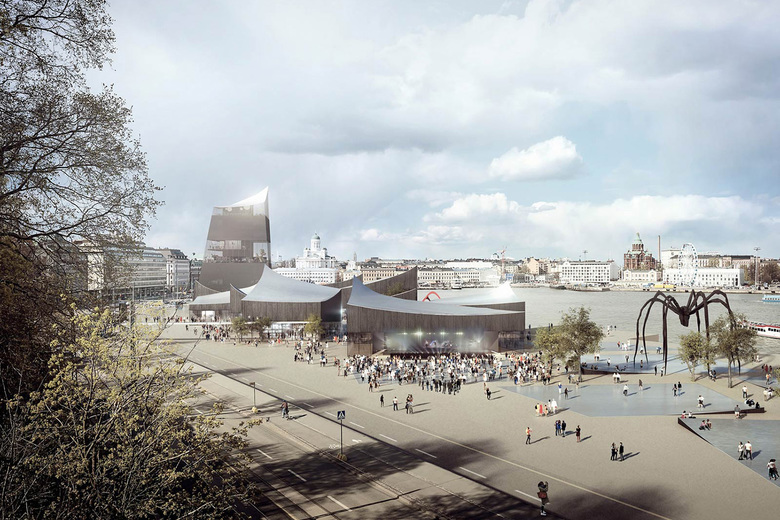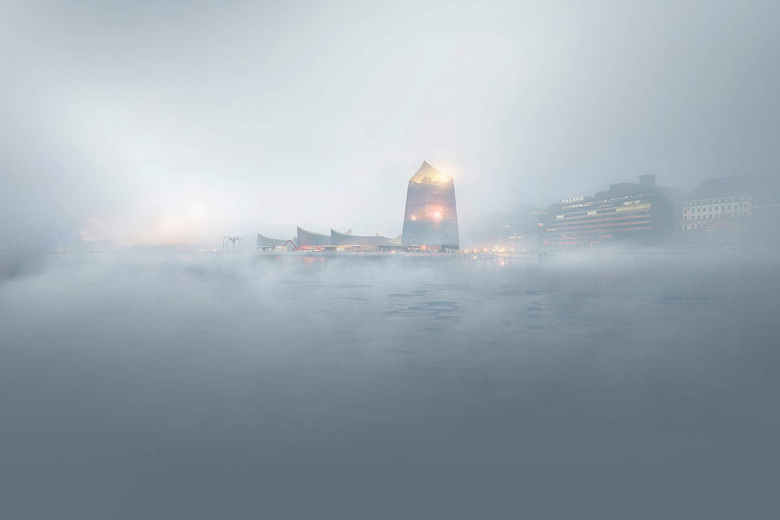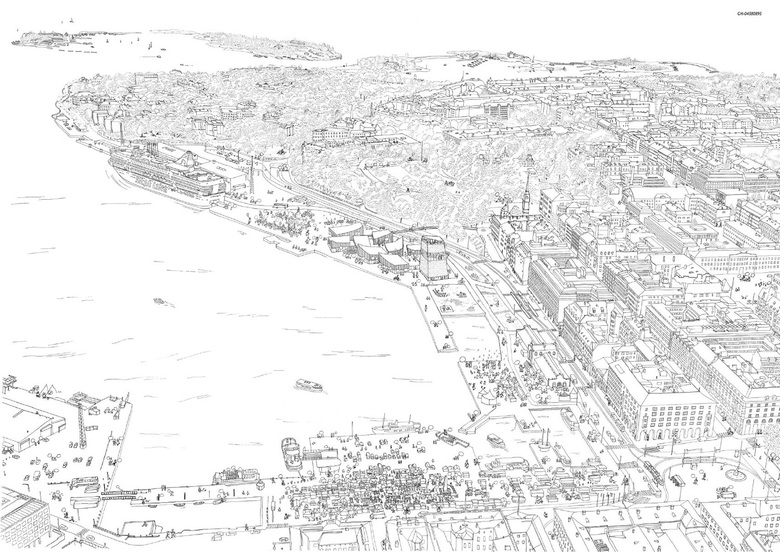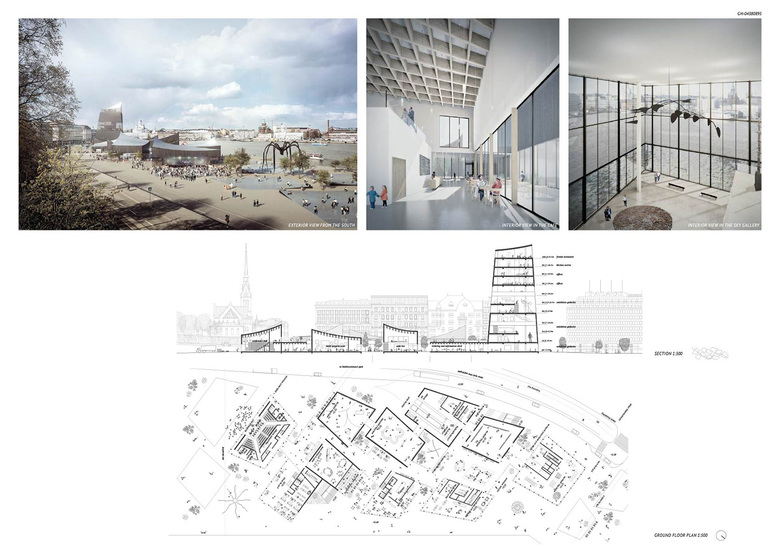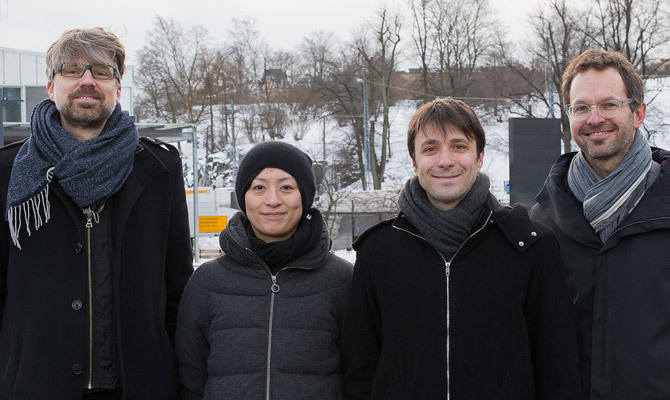Guggenheim Helsinki Winner Announced
John Hill
23. June 2015
Image: Moreau Kusunoki Architectes (all images courtesy of Guggenheim Helsinki)
The jury for the Solomon R. Guggenheim Foundation's competition for a proposed Guggenheim museum in Helsinki, Finland, has chosen "Art in the City" by Paris's Moreau Kusonoki Architectes as the winner.
The architects bested five other finalists – agps.architecture ltd., Asif Khan Ltd, Fake Industries Architectural Agonism, haascookzemmrich STUDIO2050, and SMAR – in the anonymous, two-stage competition, which saw an astounding 1,715 entries from 77 countries in the first round.
Image: Moreau Kusunoki Architectes
Moreau Kusunoki Architectes, founded in 2011 by Nicolas Moreau and Hiroko Kusunoki, responded to the vacant harbor-front site with a design they describe as sensitively weaving into the landscape and encouraging people to "flow within a new cultural core that is linked to the rest of the city, through the port promenade and the pedestrian footbridge to the Observatory Park." Galleries are composed in independent volumes, while a "landmark tower" tops the museum, offering "a new perspective over the city." The exterior is envisioned as a charred timber facade that "echoes the process of regeneration that occurs when forests burn and then grow back stronger."
Image: Moreau Kusunoki Architectes
The jury* issued this statement upon selecting Moreau Kusonoki Architectes' "Art in the City":
The waterfront, park, and city each had a dialogue with the building yet the forms and materials were distinctive and contemporary, without being iconic. The drawings were imbued with a sense of community and animation that matched the ambitions of the brief to honour both the people of Finland, and the creation of the museum of the future.
It was recognized that further work would be needed to resolve vertical circulation, use of the main terrace, and the construction of the roof, but these issues were considered to be a normal part of design development, and the Jury had confidence in the strength of the design concept. The concept is extremely flexible and is designed to embrace evolving urban, museum, and technological requirements.
Image: Moreau Kusunoki Architectes
Although the competition process is complete, construction of the museum is not guaranteed. While the Helsinki city council allowed the Guggenheim to hold the competition, they have waited until after it was held to approve or reject the museum's proposal – they rejected a 2012 proposal that was envisioned for a different site. The Guggenheim Foundation said in a statement, "Further consideration regarding the development of the proposed museum lies with the Finnish stakeholders at the local and national level."
From left: Jan Wurm, technical team leader, ARUP; Hiroko Kusunoki, Principal, Moreau Kusunoki Architectes; Nicolas Moreau, Pricipal, Moreau Kusuonoki Architects; Pekka Pakkanen, Architect, Huttunen Lipasti Pakkanen Architects. (Photo: Ritta Supperi)
*The competition jury was chaired by Mark Wigley, professor and dean emeritus of the Graduate School of Architecture, Planning and Preservation at Columbia University, and was made up of Mikko Aho, Director of City Planning and architect, City of Helsinki; Jeanne Gang, founder and principal, Studio Gang Architects; Juan Herreros, founder and principal, Estudio Herreros; Anssi Lassila, architect and founder, OOPEAA Office for Peripheral Architecture; Erkki Leppävuori, president and CEO, VTT Technical Research Centre of Finland; Rainer Mahlamäki, professor and founder, Lahdelma & Mahlamäki Architects; Helena Säteri, Director General, Ministry of the Environment, Finland; Nancy Spector, Deputy Director and Jennifer and David Stockman Chief Curator, Solomon R. Guggenheim Foundation; Yoshiharu Tsukamoto, founder, Atelier Bow-Wow; and Ritva Viljanen, deputy mayor, City of Helsinki.
